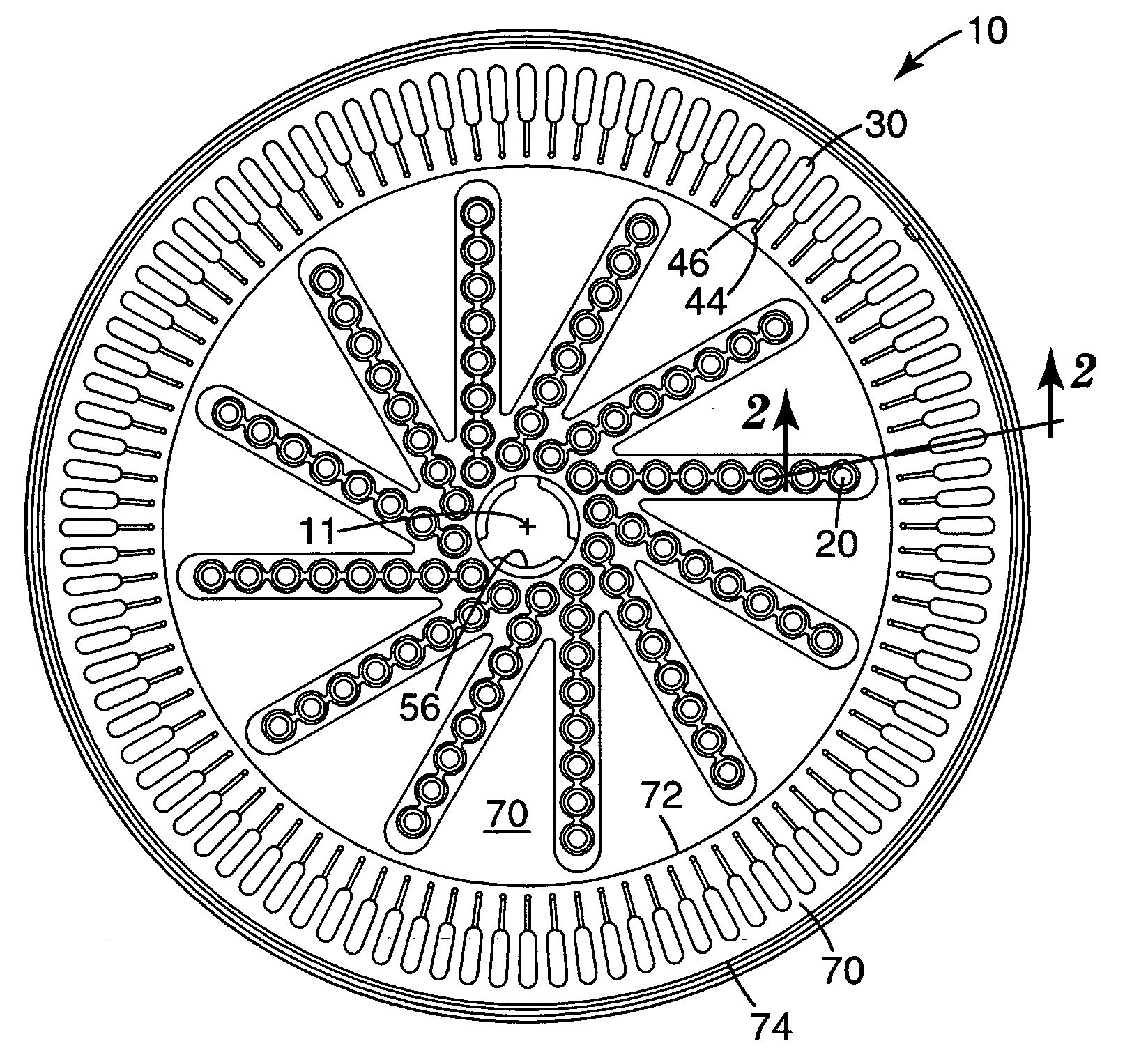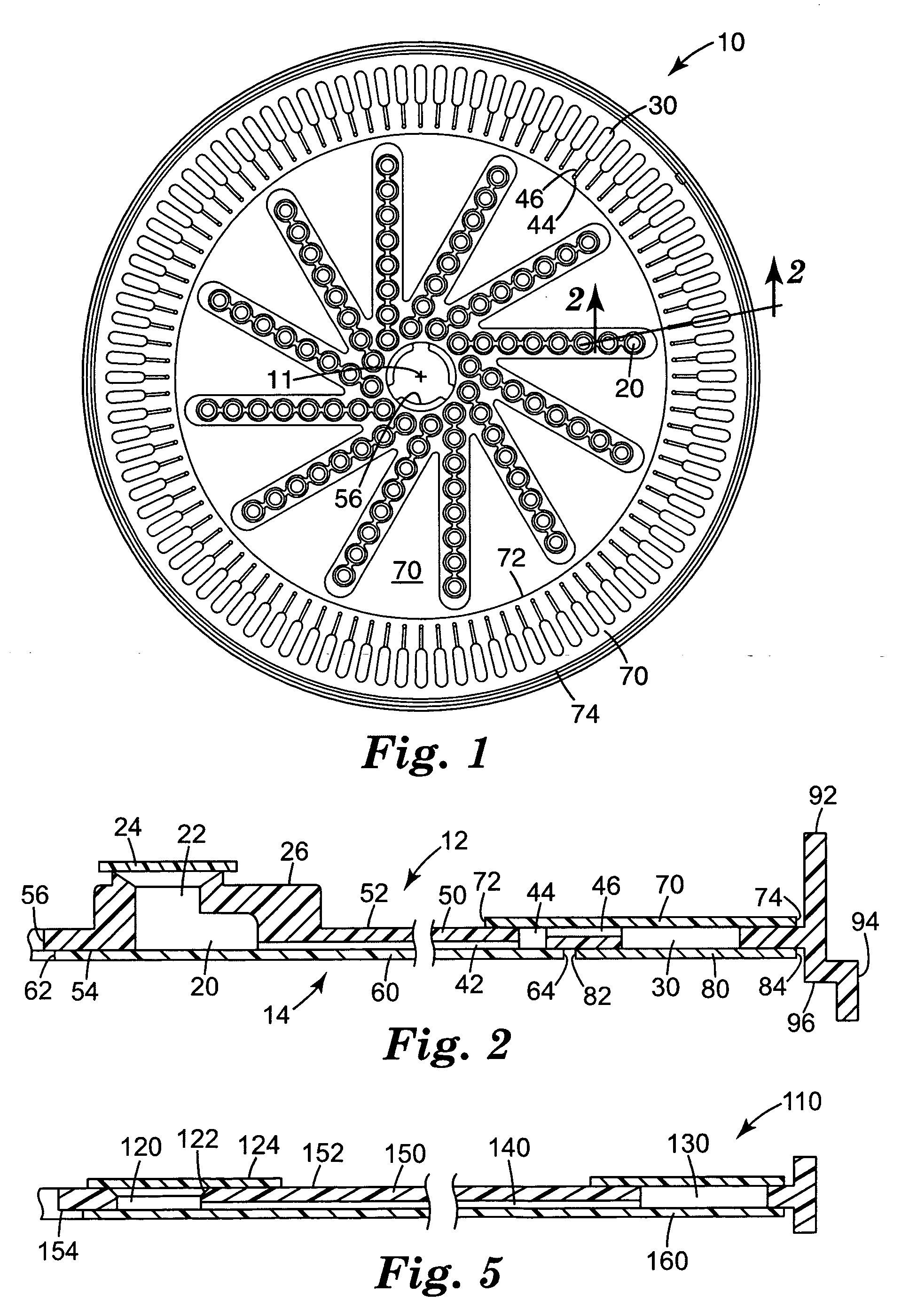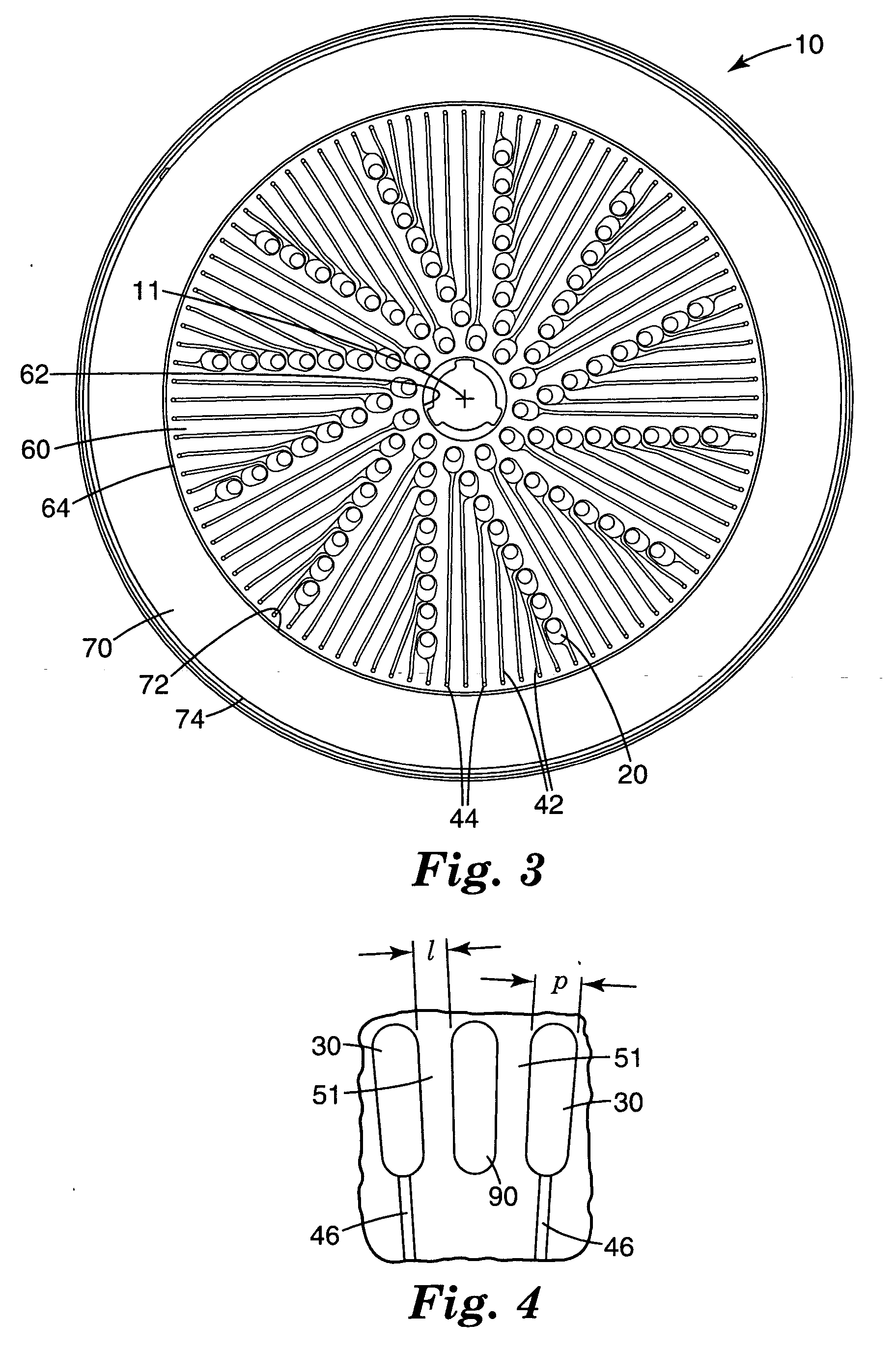Compliant microfluidic sample processing disks
a processing disk and microfluidic technology, applied in the field of microfluidic sample processing disks, can solve the problems of inaccurate or inaccurate control of chamber-to-chamber temperature uniformity, time-consuming and expensive individual processing, misleading or inaccurate control, etc., to improve the flexibility of the disk, reduce the amount of body material, and ensure compliance and flexibility
- Summary
- Abstract
- Description
- Claims
- Application Information
AI Technical Summary
Benefits of technology
Problems solved by technology
Method used
Image
Examples
Embodiment Construction
[0032] In the following description of exemplary embodiments of the invention, reference is made to the accompanying figures of the drawing which form a part hereof, and in which are shown, by way of illustration, specific embodiments in which the invention may be practiced. It is to be understood that other embodiments may be utilized and structural changes may be made without departing from the scope of the present invention.
[0033] The present invention provides microfluidic sample processing disks and methods for using them that involve thermal processing, e.g., sensitive chemical processes such as PCR amplification, ligase chain reaction (LCR), self-sustaining sequence replication, enzyme kinetic studies, homogeneous ligand binding assays, and more complex biochemical or other processes that require precise thermal control and / or rapid thermal variations. The sample processing disks are preferably capable of being rotated while the temperature of sample materials in process cha...
PUM
 Login to View More
Login to View More Abstract
Description
Claims
Application Information
 Login to View More
Login to View More - R&D
- Intellectual Property
- Life Sciences
- Materials
- Tech Scout
- Unparalleled Data Quality
- Higher Quality Content
- 60% Fewer Hallucinations
Browse by: Latest US Patents, China's latest patents, Technical Efficacy Thesaurus, Application Domain, Technology Topic, Popular Technical Reports.
© 2025 PatSnap. All rights reserved.Legal|Privacy policy|Modern Slavery Act Transparency Statement|Sitemap|About US| Contact US: help@patsnap.com



